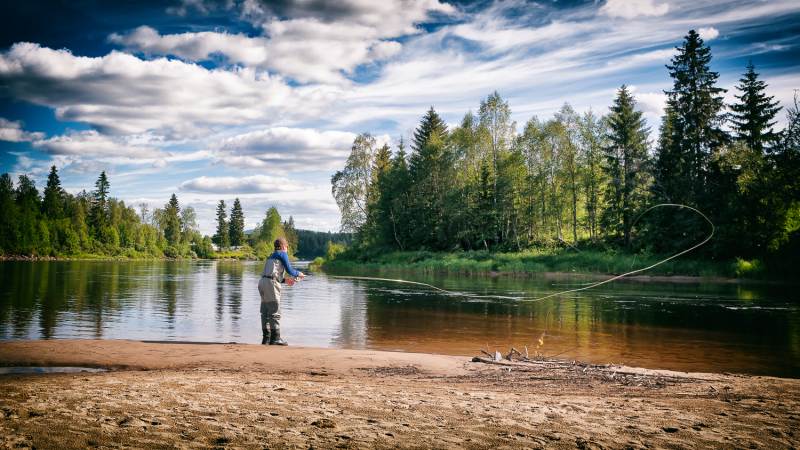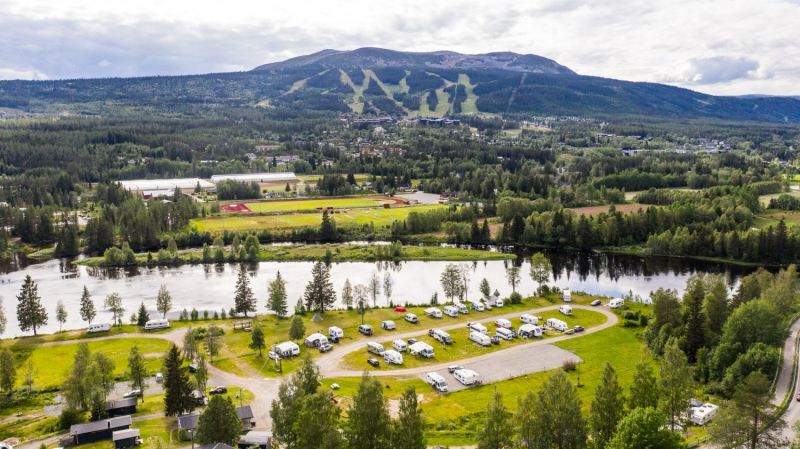Trysilelva

The Trysilelva is part of the Trysilvassdraget, which has the large lake Femunden as its center, in the border areas between the Inland and Trøndelag. The river starts as the Femund River which flows out of Galtsjøen south of Femunden. Galtsjøen has its supply from Femunden and Isteren via Isterfossen, Galthåen and Galtstrømmen. Femundselva flows through Engerdal until it reaches Sennsjøen (520 masl). From there, the river is called Trysilelva where it flows down through Trysil's forested landscape. South of Nybergsund, the name Klara is also used on the river. Near the border with Sweden, there are two power plants on the Norwegian side: Sagnfossen and Lutufallet. Further from there, the Trysilelva river flows into Sweden with the name Klarälven by Långflon. In Sweden, the river flows into Sweden's largest lake Vänern near the city of Karlstad.
The Trysilelva is part of what is seen in context as Scandinavia's longest watercourse, including the lakes along the way, and which changes its name several times. The source of this river is Lake Rogen on the border between Norway and Härjedalen. Here the river is called Røa, and follows the border between Røros in Trøndelag and Engerdal in the Inland all the way to Femunden. From Femunden it flows under the name Femundselva through Engerdal municipality. When the river reaches Trysil municipality, it is called Trysilelva up to the Swedish border and from there is called Klarälven all the way down to Vänern. Lake Vänern's outlet is through the Göta River, which flows into the Kattegat near Gothenburg.
The Trysilelva is permanently protected against power development in accordance with Conservation Plan I for watercourses. The river had major floods in 1927, 1934 and 1967. On June 1, 1995, all these flood targets were passed under what is known as Vesleofsen. The river then had a water flow of 760 m³ / s at Nybergsund. Storofsen still holds the flood record.
Length: 256.7 km (160 mi)











